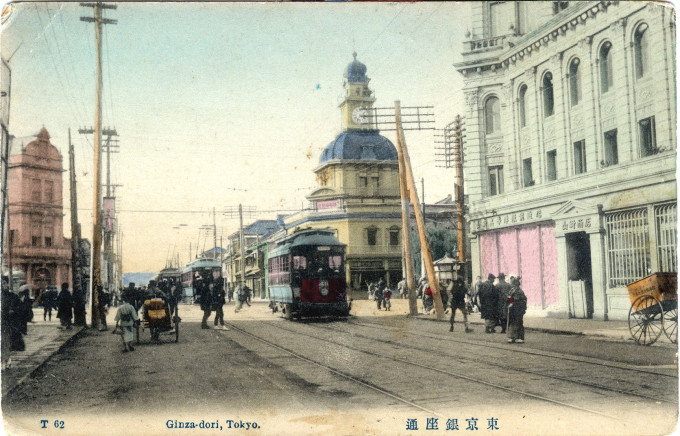
Ginza Crossing, c. 1910, looking west down Harumi-dori toward the Imperial Palace. The Hattori clock tower was the district’s most prominent landmark.
See also:
Ginza Crossing, c. 1910-1940
Ginza at Night, c. 1930
Mikimoto Pearls, Ginza, c. 1950
“Success did come [to Ginza], but slowly, and by 1894 the Hattori Building at Harumi-dori and Chuo-dori had begun to change the area. Its clock tower became a rendezvous spot, and what had been a newspaper building was now to become a major store of quality products under the name of Wako. The building originally bore the name of Hattori Kintaro, a twenty-two-year-old watchmaker who opened a shop on the Ginza.
“By 1881 his watches were so well made that they were given as gifts by the Imperial Household. He named his watches Seiko, meaning ‘precision’, a name and a reputation they have maintained.”
– Tokyo: A Cultural Guide to Japan’s Capital City, by John Martin & Phyllis Martin, 2013
- Ginza Crossing, c. 1910. The landmark Hattori building clock tower is at center-left.
- Ginza Crossing, c. 1910, with the Hattori clock tower at center-left.
“The watch was among the symbols of Civilization and Enlightenment. An enormous watch is the mark of the Westernized dandy in satirical Meiji prints. Hattori had come upon a good thing, but only remarkable acumen and industry thrust him ahead of enterprises already well established … The Hattori tower, there where the two trolley lines were to cross, marked the center of the world for mercantile adventuring.”
– Tokyo from Edo to Showa 1867-1989: The Emergence of the World’s Greatest City, by Edward Seidensticker, 2011
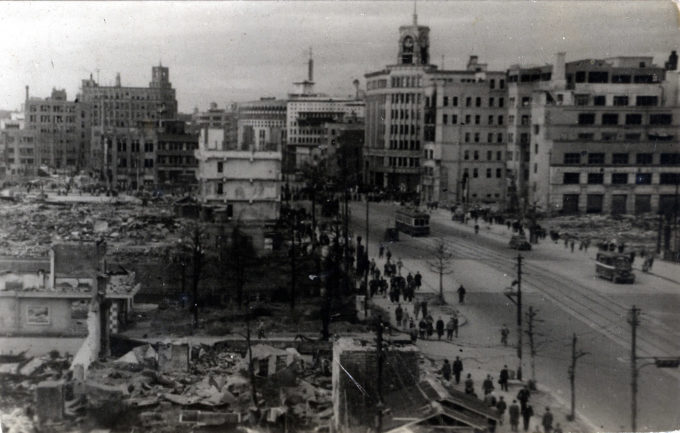
Ginza Crossing, c. 1945, with the Wako Building at upper-center. The district suffered great damage during a May 1945 firebombing of Tokyo. In the immediate aftermath of the Pacific War, Ginza remained a burnt-out shell of its former self, but would quickly be rebuilt during the Occupation.
“From 1894 to 1921, the Hattori Clock Tower stood on the site that Wako occupies today. In 1921, the Hattori Clock Tower was demolished to rebuild a new one. Reconstruction was delayed by the Great Kanto earthquake of 1923 but the new tower was completed in 1932. In homage to its predecessor, the new store was also fitted with a clock.
“The 1932 Neo-Renaissance style building, designed by Jin Watanabe, with its curved granite façade, remains today as the central landmark for the Ginza district (the clock tower still plays the famous Westminster Chimes) and was one of the few buildings in the area left standing after World War II. During the Occupation (1945-1952), Wako functioned as the Tokyo PX store for Allied occupationaires.
“Many architects will be happy if they get to build one landmark building, but Watanabe actually designed a whole string of them. The most renowned are undoubtedly Hotel New Grand (Yokohama, 1927), Waseda Elementary School (Tokyo, 1928), Nichigeki Theater (Tokyo, 1933-1981), Tokyo National Museum Honkan (Tokyo, 1938) and the Dai-ichi Seimei Building (Tokyo, 1938).”
– Wikipedia
- Elevated view of Ginza Crossing, c. 1940, with the Wako building clock tower at left.
- Wako building at Ginza Crossing, c. 1948, during the Occupation when the department store served as the US Army PX.


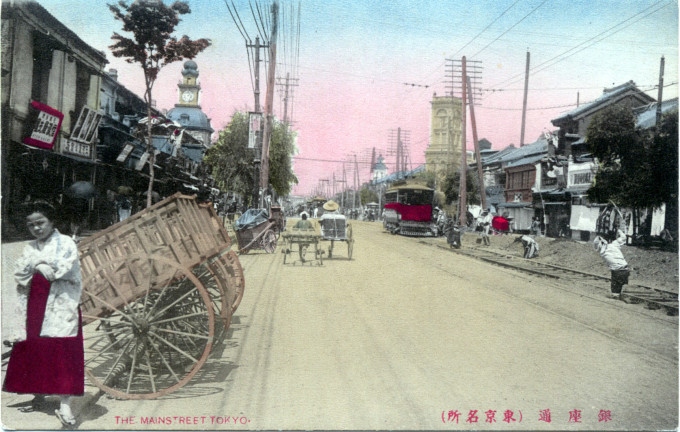
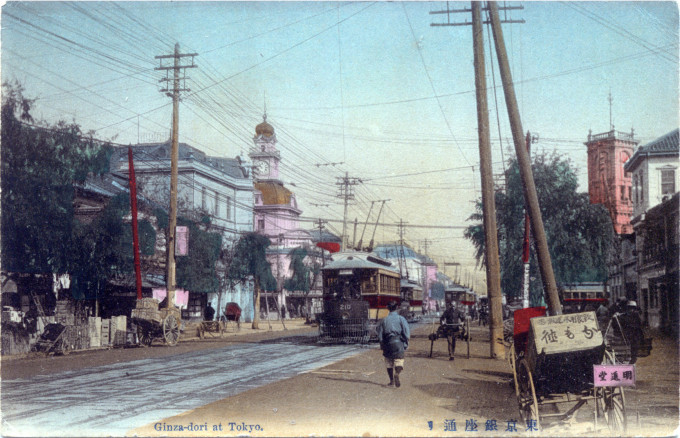
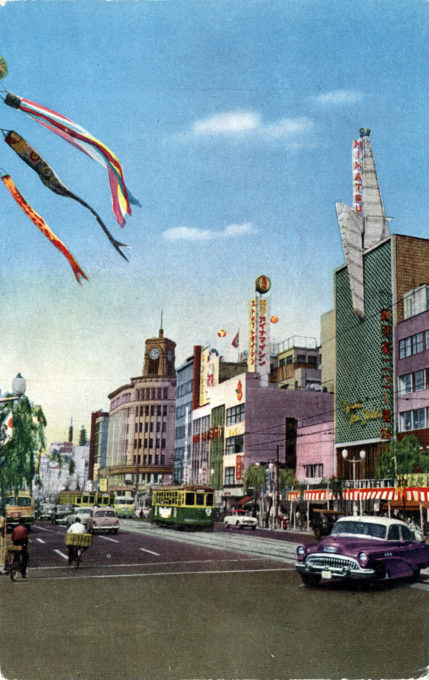
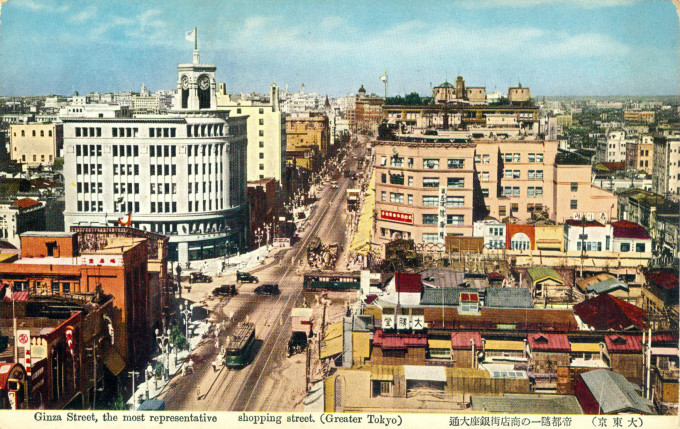
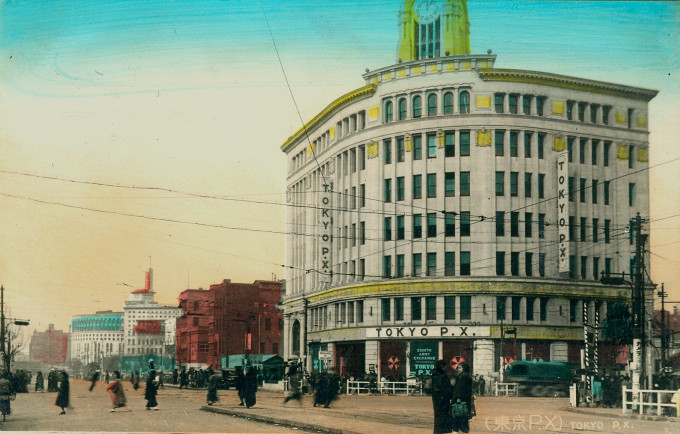
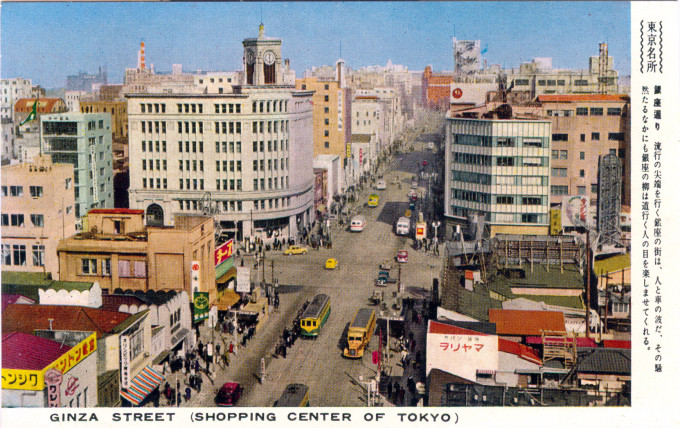
Pingback: Ginza Crossing, c. 1910-1940. | Old Tokyo
Pingback: Tokyo "Black Markets", 1945. | Old Tokyo
Pingback: Sumida River at Hashiba, c. 1910. | Old Tokyo
Pingback: Kyobashi (Capital Bridge), c. 1910. | Old Tokyo
Pingback: Post-war Ginza, 1945. | Old Tokyo
Pingback: SEIKO เรือนเวลาจากแดนปลาดิบที่มี GLOBAL AMBASSADOR เป็นคนยุโรป และขายดีติดตลาดไทย » Unlockmen
Pingback: SEIKO Museum Ginza – Ten Minute Tokyo
Pingback: Ginza Superguide | Ten Minute Tokyo